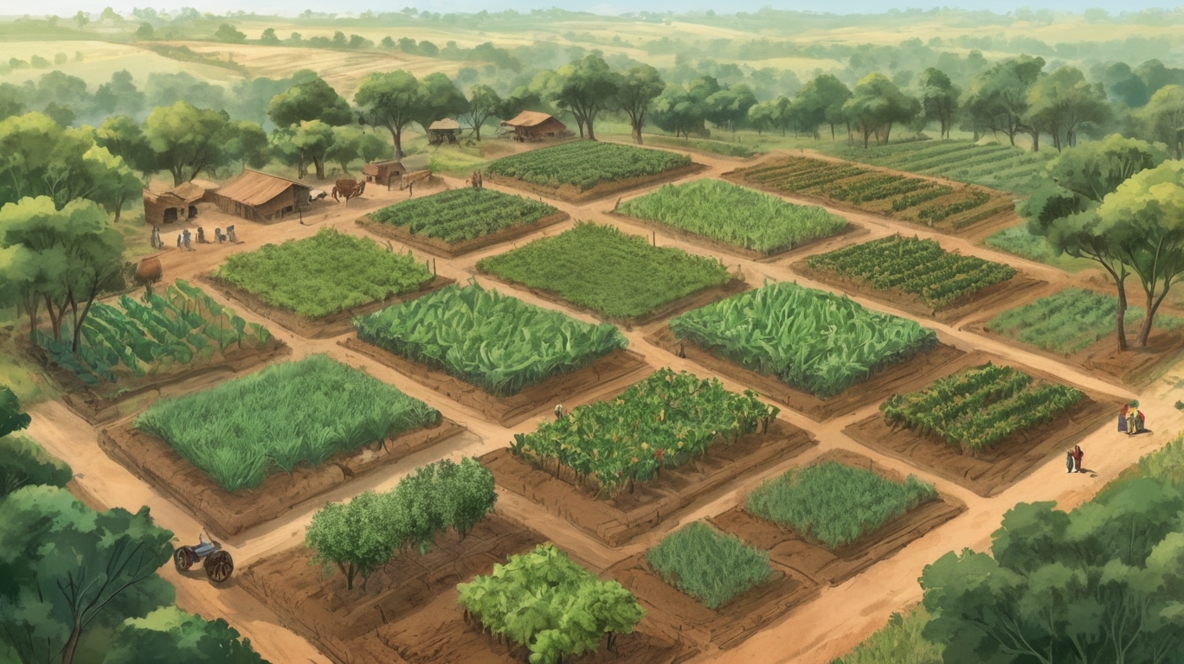Some farms are more than just rows of crops. Trees stand tall, livestock graze in shaded areas, and different plants work together like a well-orchestrated team. This isn’t just good land use—it’s a smart way to farm. Agroforestry is about blending trees, crops, and sometimes livestock to create a balanced system where everything supports each other. It’s not a one-size-fits-all approach, but rather a set of techniques that farmers can adjust based on their needs and environment.
The right agroforestry model can boost productivity, build soil health, and provide year-round income. But what does that look like in practice? Let’s go beyond theory and see how different models work on small farms.
Silvopasture: Integrating Trees with Livestock
Livestock need food and shelter, and trees can provide both. Silvopasture combines trees, forage plants, and grazing animals to create a system that benefits the soil, the animals, and the farmer’s bottom line.
How It Works
- Animals graze under tree canopies, benefiting from natural shade.
- Certain tree species offer high-protein leaves that serve as feed.
- Deep-rooted trees help cycle nutrients, making the soil more fertile.
- Farmers get multiple sources of income—meat, milk, timber, and fruit.
Best Trees for Silvopasture
Some trees are better suited for this model than others.
- Nitrogen-fixing trees: These improve soil fertility and serve as a protein source.
- Fruit and nut trees: Provide an additional income stream.
- Fast-growing trees: Offer shade quickly and can be used for firewood or timber.
Alley Cropping: Rows of Opportunity
Not all farms have the luxury of vast open spaces, but alley cropping makes the most of what’s available. This method plants trees in rows with wide spaces in between for growing crops.
Why It Works
- Trees protect crops from strong winds.
- Their roots prevent soil erosion.
- Some trees, like legumes, enrich the soil with nitrogen.
- Farmers gain both short-term (crops) and long-term (trees) returns.
Crop and Tree Combinations That Work Well
- Grain crops with nut trees
- Vegetables with fruit-bearing trees
- Medicinal plants under shade-tolerant trees
The key is selecting combinations that don’t compete for sunlight, water, or nutrients.
Forest Farming: Growing in the Shade
Not all crops thrive under full sunlight. Some prefer the filtered light of a forest, and forest farming takes advantage of that.
Common Crops in a Forest Farming System
- Mushrooms: Grown on logs or in the rich forest soil.
- Medicinal plants: Many herbs flourish in shady environments.
- High-value shade crops: Vanilla, coffee, and cocoa are prime examples.
This approach requires patience, but the returns can be substantial. Products grown in natural forest settings often command premium prices.
Windbreaks: More Than Just Barriers
Wind can strip soil, damage crops, and stress livestock. Windbreaks are tree or shrub rows planted to reduce wind speed, but they do much more than that.
How Windbreaks Help
- Protect soil from erosion.
- Increase moisture retention in the soil.
- Provide a habitat for pollinators and pest-controlling birds.
- Reduce heating and cooling costs for farm buildings.
Best Windbreak Trees
- Tall, fast-growing species: Block strong winds.
- Multi-layered plantings: A mix of shrubs and trees adds more protection.
- Drought-resistant trees: Thrive even in dry areas.
A well-placed windbreak can make a small farm more resilient, especially in areas prone to extreme weather.
Home Garden Agroforestry: Farming at a Small Scale
Many smallholder farmers don’t own vast lands, but they can still practice agroforestry. Home garden agroforestry is a traditional approach where multiple crops, trees, and livestock coexist in a small space.
What Makes This Model Work
- Fruit trees provide food and shade.
- Vegetables grow in the spaces between trees.
- Small livestock like chickens or goats find food in the system.
- Composting organic waste keeps the soil healthy.
This setup mimics a natural ecosystem, making it incredibly sustainable.
Boundary Planting: Making Fences Productive
Fences mark farm boundaries, but they don’t have to be unproductive. Boundary planting turns fence lines into sources of income and environmental protection.
How Farmers Use This Model
- Planting fruit or nut trees along fences.
- Using fast-growing timber species for periodic harvests.
- Creating living fences with thorny or dense shrubs to keep animals in or out.
Instead of wire or wooden fences that need maintenance, boundary planting offers long-term benefits.
Final Thoughts
Agroforestry is more than just planting trees on a farm. It’s about creating smart, interconnected systems that improve productivity, protect the environment, and increase resilience. For smallholder farmers, the right agroforestry model can mean better soil, healthier livestock, and more reliable income streams.
Not every farm can adopt every method, but choosing even one that fits can make a noticeable difference. Whether it’s silvopasture, alley cropping, or forest farming, each model brings something valuable to the table. The key is to start with what’s practical and build from there.
